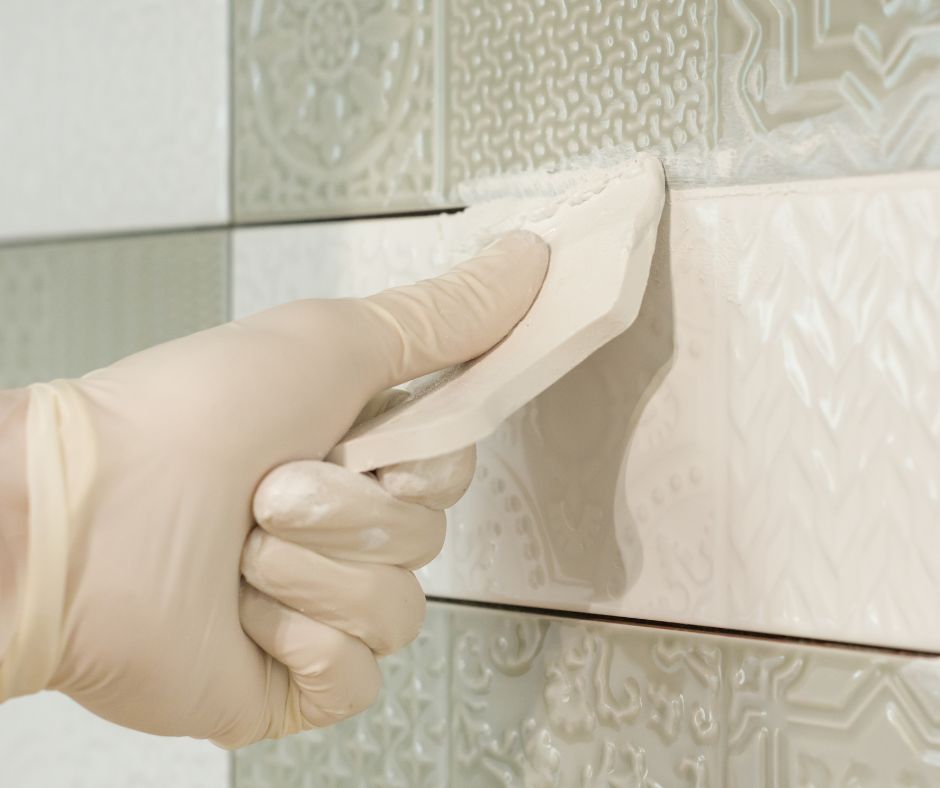Have you noticed unsightly holes in your shower tile grout?
Don’t panic! While these imperfections can detract from the overall aesthetic appeal of your shower, they are manageable and can be fixed with relative ease. It's important to tackle these issues promptly to prevent more significant complications and maintain the integrity of your bathroom.
Here’s the good news – repairing these grout holes is not as complicated as it may seem!
This detailed guide will walk you through a comprehensive, step-by-step process to effectively fix holes in your shower tile grout. Additionally, we’ll dive into the common causes behind grout damage and share valuable preventive tips to help you steer clear of these issues in the future.

Step-by-Step Guide to Perfectly Repairing Holes in Your Shower Tile Grout
Repairing those pesky grout holes might seem intimidating at first glance, but it’s a straightforward process when broken down into manageable steps. Allow me to guide you through the essential actions that will restore your shower to its pristine condition, transforming it from a source of frustration into a space you can enjoy.
#1 Gather Essential Grout Repair Tools for a Smooth Repair Process
Before embarking on your grout repair journey, it’s crucial to collect all necessary supplies to ensure the task is efficient and effective. Here’s a comprehensive list of items you will need:
- Specialized grout removal tools
- Caulk gun
- Grout that matches your existing tile color
- Grout float for smooth application
- A sponge for cleanup
- A bucket of water for rinsing
- Masking tape for sharp edges
Always prioritize safety by wearing gloves and safety glasses while working. Having all your tools organized in advance will significantly streamline the entire process, making it less stressful and more enjoyable.
Also, check out: Epoxy Grout VS Cement Grout for more insights.
#2 Prepare Your Shower Area Thoroughly for Effective Grout Repair
With your tools at the ready, it’s time to prepare the area for repair. Start by applying masking tape around the grout lines where the holes are located.
This crucial step helps keep the new grout in place, ensuring a clean and professional finish that enhances the overall appearance.
Next, carefully utilize your grout removal tool to extract the old, damaged grout. Exercise caution to avoid scratching the tiles, especially in a shower setting where the waterproof membrane beneath the tiles must remain intact. This preparation step is vital as it creates a clean and stable surface for the new grout to adhere effectively, ensuring a durable repair.
Also, check out: Why Grout Gets Stained And Damaged for more information.
#3 Clean the Grout Workspace Thoroughly Before Applying New Grout
Once you've removed the old grout, it's essential to clean the workspace meticulously. Use a slightly damp cloth to wipe down the surface, ensuring that all dust and debris from the grout removal process are cleared away.
Allow the area to dry completely before applying the new grout; a dry surface significantly enhances the adhesion of the new grout, ultimately leading to a long-lasting repair that will withstand the test of time.
#4 Apply New Grout Skillfully for a Smooth and Even Finish
Now comes the exciting part! Prepare your grout according to the instructions provided on the packaging, aiming for the perfect consistency – neither too watery nor overly thick.
Utilize your grout float to apply the new grout over the holes, making sure to push it in at an angle. This technique is essential as it helps fill all gaps and creates a smooth, even finish that enhances the overall aesthetic of your shower.
After filling the holes, use the float to level the surface and remove any excess grout, ensuring a tidy and professional appearance. Taking the time to apply the grout skillfully will have a significant impact on the look and longevity of your shower.
#5 Carefully Wipe Away Excess Grout for a Polished and Professional Look
Once the grout has set for a brief period, take your damp sponge and gently wipe away any excess grout.
Be sure to rinse the sponge frequently to prevent grout from drying on it, which can complicate the cleaning process. This step requires a bit of patience, but achieving a polished, professional appearance is well worth the effort. Take your time to ensure everything is perfect before allowing it to dry completely and then removing the masking tape.
Also, check out: Regrouting Your Bathroom Grout for additional tips.
#6 Optional: Seal the Grout to Enhance Longevity and Durability
If you’re interested in prolonging the lifespan of your grout, consider applying a grout sealer.
While this step isn’t mandatory, it can provide substantial protection against moisture and stains, thereby extending the life of your repair significantly. If you choose to seal the grout, ensure you wait a few days for it to fully cure before applying the sealer.
Carefully follow the manufacturer’s instructions for optimal results, and you will add an extra layer of protection to keep your grout looking fresh and vibrant for years to come.

Understand the Common Causes of Grout Damage and Adopt Preventive Strategies
Have you ever stopped to consider what causes those unsightly holes in your grout in the first place?
The main culprits are typically moisture and aggressive cleaning methods. Grout is inherently porous and can deteriorate over time, especially if it isn’t adequately sealed. Showers, being exposed to constant water and frequent cleaning, can exacerbate the problem.
Additionally, the natural settling of your home can lead to minor shifts that create cracks or holes in the grout, further compromising its integrity.
To prevent future holes from developing, consider sealing your grout immediately after installation or repair.
Using gentle cleaning products can also prolong the lifespan of your grout. Avoid harsh chemicals that can degrade grout over time and lead to unsightly damage.
Regularly inspecting your shower grout for any signs of damage can also be beneficial.
Addressing any issues as soon as they arise will help prevent them from worsening into more significant problems that could require costly repairs.
Essential Insights for Achieving Successful Grout Repair
Repairing holes in your shower tile grout is entirely achievable on your own, and undertaking this task can prevent more significant, costly issues from arising in the future.
However, if you prefer to have professionals manage this task, we are here to assist. Our team can efficiently handle the regrouting process, relieving you of the hassle while ensuring high-quality results.
Regardless of your choice – addressing those holes will help maintain your shower's functionality and aesthetic appeal for years to come!
What Should You Do If Your Contractor Left Holes in Your Grout?
If you’ve recently undergone renovations in your bathroom and discovered holes in the grout, it’s essential to reach out to your contractor without delay. A reputable professional should ensure that no holes or imperfections remain in the grout.
Most reliable contractors will be more than willing to return and rectify these issues promptly, ensuring you are satisfied with the final result.
How Can You Effectively Repair Pin Holes in Grout?
To address pin holes in the grout, start by cleaning the area thoroughly and lightly dampening the surrounding grout. Next, press a small amount of grout into the holes, smoothing the patched area with your finger to achieve a seamless finish that blends perfectly with the existing grout.
What’s the Correct Process for Repairing Missing Grout in the Shower?
Fixing missing grout is quite similar to repairing holes. Begin by ensuring the area is thoroughly cleaned, then apply new grout to the affected spots. Use your grout float to smooth it out, ensuring a level finish. Finally, remove any excess grout and allow it to dry completely for optimal results.

The Article: Holes in Shower Tile Grout? Effective Solutions Inside! first appeared on https://writebuff.com.
The Article Effective Solutions for Holes in Shower Tile Grout Was Found On https://limitsofstrategy.com


I really appreciate your step-by-step approach! It’s so easy to overlook the grout until it’s looking less than perfect, but I’ve come to realize how those little details can make such a big difference in the overall vibe of a bathroom. I recently tackled a similar issue in my shower, and honestly, it felt a bit like DIY therapy.
It’s so true how easy it is to overlook grout until it starts to become a real eyesore. It’s odd, but little details like that really can transform the whole ambiance of a space. Your experience of tackling your shower sounds great—there’s something really therapeutic about DIY projects. It strikes me how engaging in hands-on work like that can serve as a kind of mindfulness practice.
You bring up a really interesting point about how easy it is to overlook the small details, like grout, until they really stand out in a negative way. It’s fascinating how such minor aspects can shift the entire feeling of a room. I remember when I decided to redo the grout in my kitchen; I hadn’t realized how much dirt had built up over time. Once it was clean and fresh, the whole space felt brighter and more inviting.
It sounds like you had quite the project with your shower! Grout really can sneak up on you, can’t it? It’s one of those things that gets neglected until it’s the first thing you notice when you walk into the bathroom. I think it’s great that you found some DIY therapy in it—there is something really satisfying about getting your hands dirty and transforming a space, even in small ways.